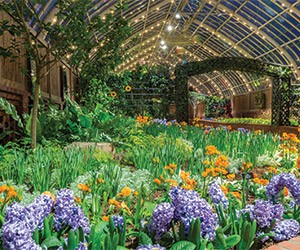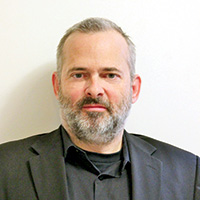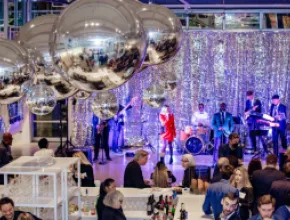Sustainability has been a Keystone State hallmark practically since day one.
Not long after founding Philadelphia and Pennsylvania in 1682, William Penn, who used his name plus the Latin root sylva, meaning “woods,” for the state name, required that settlers preserve one acre of trees for every five they cleared. Half a century later, Benjamin Franklin advocated for waste and pollution regulations, including the removal of odious tanneries from Philadelphia’s commercial district.
Jerome “Mr. Organic” Rodale, who relocated to Pennsylvania’s Lehigh Valley from New York City around 1930, was an early (and extreme) advocate for sustainable agriculture, organic farming and healthy living. Launching still-running magazines Prevention and Organic Gardening and Farming (now Rodale’s Organic Life) in the 1940s, Rodale famously died in 1971 while appearing on The Dick Cavett Show.
Born in 1907 just outside of Pittsburgh, naturalist and marine biologist Rachel Carson promoted “the wonder and beauty of the living world” in writings such as her landmark 1962 book Silent Spring, from which her call “for a change in the way humankind viewed the natural world” helped to significantly shape the global sustainability movement.
Carson passed away in 1964, but were she alive today, she would not have to go far to see one incredible environmental triumph—the transformation of Pittsburgh, once “hell with the lid taken off” from its belching steel, coal and aluminum industries, to one of the world’s cleanest, greenest, most livable cities.
From Philadelphia’s William Penn Foundation (1945), with protection of the Delaware River watershed among its funding priorities, to Penn State University and its Sustainability Institute, the tradition continues, including venues committed to rolling out the green carpet for groups.
Eastern Pennsylvania: Good Neighbors
Ranked 14th in the nation for green buildings in the latest (May 2016) U.S. Clean Tech Leadership Index, Philadelphia’s stock includes two of the nation’s tallest LEED-certified structures.
Earning LEED Gold status for its core and shell, the 58-story Comcast Center features high-performance glass and sunscreens, which reduce lighting and cooling expenses by maximizing natural light while blocking the sun’s heat. Targeting a spring 2018 opening and incorporating a roughly 200-room Four Seasons Hotel on its upper floors, the adjacent under-construction 60-story Comcast Technology Center is seeking LEED Platinum certification.
Speaking of “good neighbors,” that’s the name of the pioneering hospitality industry CSR program established by Loews Hotels & Resort CEO Jonathan Tisch back in 1989. The brand’s “Good Neighbor Program” incorporates a wide-ranging green policy, which includes partnerships with Green Star and other green initiatives, and membership on the Green Meeting Industry Council.
On the program with other properties is the Loews Philadelphia Hotel. Housed in a 1990 adaptation of the 1932 National Historic Landmark PSFS (Philadelphia Savings Fund Society) skyscraper, the 581-room Center City property, offering 47,000 square feet of versatile indoor space, follows brand standards for food donation, strategic energy, waste and laundry management, and an on-site advisory “Green Team.”
In neighboring Montgomery County, the Chubb Hotel & Conference Center (formerly ACE Conference Center) has a unique green story. Set on 300 secluded acres, Chubb features 120 newly renovated guest rooms and 42 meeting rooms, including three amphitheaters and 21 “Collaboration Studios” for groups of five to 500 guests.
Along with energy-efficient HVAC and lighting systems, on-site water purification and filtration technology, and comprehensive recycling programs, the property was developed in accordance with the rigorous environmental standards set by Audubon International (inspired by, but not affiliated with, world-renowned ornithologist, naturalist and artist John James Audubon).
Chubb’s golf course, the ACE Club, is certified as an Audubon International Silver Signature Sanctuary, incorporating no-spray, no-mow policies in protected areas. Chubb’s environmental resource program extends to preserving 135 acres of wildlife habitat on the property.
Also near Philadelphia in Kennett Square, group-capable Longwood Gardens is a historic horticultural heaven intensely focused on sustainability practices.
Just outside Milford in the Pocono Mountains region, Grey Towers National Historic Site was the home of Gifford Pinchot, founder and first chief of the U.S. Forest Service, and two-term governor of Pennsylvania. He believed that resources should be managed for “the greatest good for the greatest number for the longest time.”
Completed in 1886, the mansion, its gardens and surrounding forest are open year-round. Programs include guided tours, education, hikes and special events; the on-site conference facilities are available to groups focused on conservation, environmental and natural resource issues.
Central Pennsylvania: Planting the Seeds
Offering programs in renewable energy, resource economics and policy, sustainability systems and more, Penn State University’s College of Agricultural Sciences is a leader in environmental education and research. Embracing sustainability as “a foundational principle that enriches all of its pursuits and missions,” the university created its Sustainability Institute to integrate this purpose throughout the school’s research, teaching, outreach and operations.
Minutes by shuttle from the main State College, Pennsylvania campus, perennial planner favorite The Penn Stater Conference Center Hotel is equally a green leader. Offering 300 guest rooms and suites, the region’s premier conference center features more than 58,000 square feet of highly flexible group space, with a comprehensive set of amenities for comfortable and productive meetings, functions and events.
Managed along with the historic on-campus group-capable Nittany Lion Inn by Penn State Hospitality Services, the IACC Green Star-certified Penn Stater has joined its sibling in winning prestigious awards for recycling, waste reduction, energy efficiency, composting and other eco-initiatives for well over a decade.
Also on campus, Medlar Field at Lubrano Park was the first stadium in the U.S.—professional or collegiate—to earn LEED certification. Home of the Minor League State College Spikes and Penn State University’s baseball team, the ballpark offers a range of tour and private event options for groups.
Perpetuating founder Milton S. Hershey’s legacy of “caring for people and the environment in which they live, work and play,” Hershey Entertainment & Resorts, incorporating Hershey Meetings, has a comprehensive green program that includes strategic energy and waste management initiatives, and guest education and communication services. Hershey offers more than 125,000 square feet of flexible space at three distinctive properties, including the 665-room Hershey Lodge, Pennsylvania’s largest convention resort with 100,000-plus square feet of space, and historic Hershey Lodge.
Lancaster County groups can explore Amish country the old-fashioned, eco-friendly way via horse and buggy rides with award-winning Bird-in-Hand, Pa.-based Aaron & Jessica’s Buggy Rides. Available for private groups, these engaged narrated tours substitute sleighs for buggies in winter.
Western Pennsylvania: Regeneration and Renewal
Opened in 1893, Phipps Conservatory and Botanical Gardens provided vital sanctuary from the city’s smog-choked air. Today, the group-capable “Green Heart of Pittsburgh” is an international leader in sustainable architecture and operations, with attractions including the self-sustaining Center for Sustainable Landscapes.
Against the odds—the American Lung Association once warned against living in Pittsburgh—the city’s “Renaissance I” (1946-1973) was the first step toward improving air and water quality. The true “green” tipping point came in 2003, however. One of the first buildings in the U.S. to earn LEED (Gold) certification, the David L. Lawrence Convention Center, built on a brownfield site, became the world’s first “green” convention center. Earning LEED Platinum certification in 2012, it became the world’s first convention facility with this dual LEED recognition.
With other eco-stars, including the Fairmont Pittsburgh, August Wilson Center for African American Culture and CONSOL Energy Center, the NHL’s first LEED-certified arena, green is a go for Pittsburgh groups.
Just north of the city in scenic Butler County, the green scene continues at venues such as the award-winning LEED Silver NC-certified RLA (Regional Learning Alliance) Learning & Conference Center in Cranberry Woods, which is also one of the region’s only Official Green Meeting centers. Flexible group spaces at Slippery Rock University include the LEED Silver Robert M. Smith Student Center, while near Pittsburgh-Butler Regional Airport, Succop Nature Park is an Audubon Society of Western Pennsylvania reserve with a 170-year old mansion for meetings and events.
Featuring some 200,000 acres of preserved open green space, the picturesque Laurel Highlands region offers Silver LEED-certified, green-powered meeting space at the Barn at Fallingwater, close to Frank Lloyd Wright’s masterpiece construction. Indiana County is known for its farm-to-table culture, while Erie draws include the LEED Silver-certified Erie Art Museum and the Tom Ridge Environmental Center, featuring the four-story, 45-foot-wide Big Green Screen theater.







